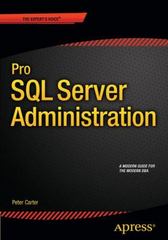Answered step by step
Verified Expert Solution
Question
1 Approved Answer
First Guesses As a starting point, we'll implement the basic components of a simple card game in Java. The Game: Sleuth Sleuth is a two
First Guesses
As a starting point, we'll implement the basic components of a simple card game in Java.
The Game: "Sleuth"
Sleuth is a twoplayer game of deduction where a player is dealt a hand of cards, and it is the job of the other player to guess what cards the first player has.
The cards in the game of Sleuth have three properties: a shape, a colour and a number. The four possible shapes are diamond, hexagon, rhombus and circle. The four possible colours are red, green, blue and yellow, and the four possible numbers are you guessed it and
The second player can ask the first player a limited set of questions, how many card the play is holding with: a particular colour, a particular shape, a particular number, or a particular combination of two of the properties properties.
The second player may also guess if the first player has a particular card.
The Starting Point
The scaffold contains a Runner class, and nothing else. Runner is to facilitate you running any testdebugging code you need to complete the task, however it is not part of the tests.
You will have to create two public classes: Card and Player that implement the necessary methods to support the functionality described above Additionally, you will need to make two enums: Shape and Colour to help model the card properties.
The enums
This should be fairly straightforward, we need two public enums, each with the values specified below.
Shape has values: RHOMBUS, CIRCLE, DIAMOND, HEXAGON.
Colour has values: RED, GREEN, YELLOW, BLUE.
Do not create the enums inside a class remember enums are a special type of class, they can be their own thing
Note this data should be in ALL CAPS, because enum values are constants
The Card
Each card has three components:
Number
Colour
Shape
You can track these however you choose, but there should be a reasonably obvious way to do this.
The Card class should have the following methods:
a single public constructor that takes three parameters: a Colour, Shape and an int
it shouldn't have any public data
three public methods, each with no parameters and returning the requested data
getColour
getShape
getNumber
A public toString method that overrides the standard toString method, returning the card data in the format "number, colour, shape"
The Player
A Player should have only these public methods:
a public constructor that takes a List of Cards.
howManyColour which takes a Colour as a parameter and returns an int with how many of the specified colour cards the player is holding.
howManyShape, taking a Shape as a parameter and returns an int with the same logic as above, but for a shape.
howManyNumber, as above, but takes an int parameter and functions as above, but for the number property.
howManyColourNumber which takes a Colour and an int and returns how many cards with both that colour and number the player is holding.
howManyColourShape, as before, with taking a Colour and a Shape and checking the players cards for those properties.
howManyShapeNumber, again, as before, but checking the Shape and Number.
hasCard which takes a Card as a parameter and returns a boolean if the player is holding that card.
Player will also need variables to keep track of relevant data, these should all be private.
I have been trying to do this tast however, i keep getting an errored message thats says Errored
Unable to build program
BUILD OUTPUT
error: file not found: java
Usage: javac
use help for a list of possible options
Step by Step Solution
There are 3 Steps involved in it
Step: 1

Get Instant Access to Expert-Tailored Solutions
See step-by-step solutions with expert insights and AI powered tools for academic success
Step: 2

Step: 3

Ace Your Homework with AI
Get the answers you need in no time with our AI-driven, step-by-step assistance
Get Started


